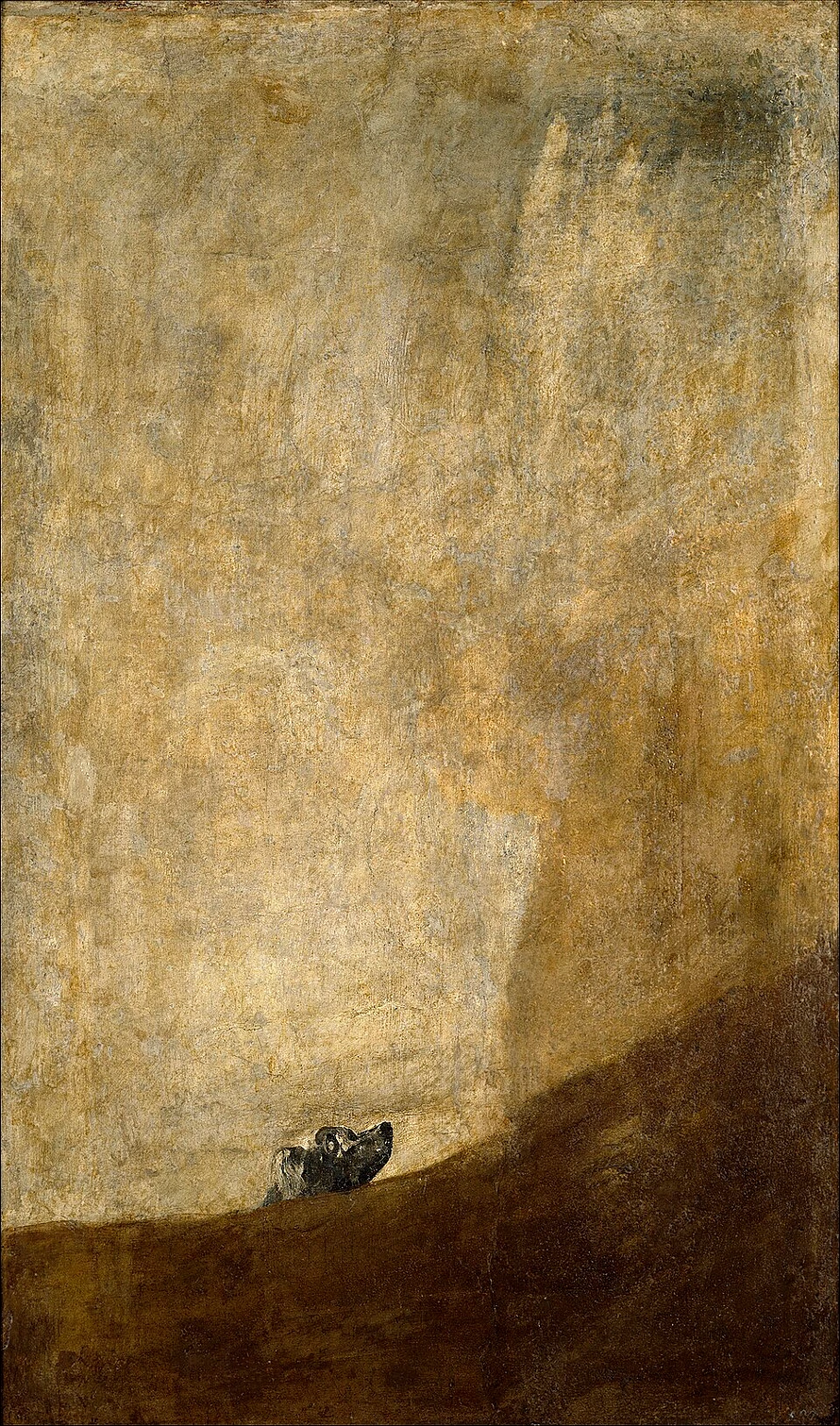Goya’s The Dog: The Most Haunting Painting You've Never Understood
Discover the meaning behind Francisco Goya’s The Dog, one of the most enigmatic works in art history. Part of the Black Paintings, this minimalist masterpiece evokes isolation, despair, and deep psychological emotion.
What Is The Dog by Francisco Goya?
At first glance, The Dog (El Perro) seems almost empty: a small dog’s head barely emerges from a vast ochre and brown void. There is no background, no context—only space and silence. And yet, this simple image remains one of Goya’s most powerful and debated works, often seen as a precursor to modern existential and abstract art.
Painted between 1819 and 1823 directly onto the walls of Goya’s house, The Dog is part of his haunting Black Paintings series.
A Masterpiece of Minimalism and Emotion
Unlike other works in the Black Paintings—which are filled with demonic figures, witches, and war-torn imagery—The Dog is silent, ambiguous, and poetic.
The dog appears to be buried in sand or sinking beneath a slope, its face turned upward toward something unseen. Its eyes are wide, its expression vacant. Is it hopeful? Helpless? Dying?
Goya leaves us no clues, and that’s part of the painting’s enduring power.
Interpretations of The Dog
Art historians and critics have proposed many interpretations:
-
Existential Isolation: The dog symbolizes human loneliness, trapped in a vast, indifferent universe.
-
Helplessness and Anxiety: The dog’s upward gaze may reflect yearning for rescue, comfort, or meaning.
-
Political Allegory: Some see the dog as a metaphor for the Spanish people, powerless during a time of war and tyranny.
But the truth is—we don’t know. The Dog remains open-ended, which makes it timeless.
A Precursor to Modern Art
The Dog is often cited as an early example of modern abstraction. Its composition is shockingly minimal, foreshadowing artists like Mark Rothko and the emotive voids of abstract expressionism.
It’s not just a painting—it’s a feeling.
A Painting Never Meant to Be Seen
Like all the Black Paintings, The Dog was painted directly on the walls of Goya’s house, the Quinta del Sordo (“House of the Deaf Man”). Goya never titled it, never exhibited it, and may never have intended it for public view.
After Goya’s death, the mural was transferred to canvas and is now housed in the Museo del Prado in Madrid.
Conclusion: Why The Dog Still Matters
Francisco Goya’s The Dog captures something many paintings don’t—the emotion beyond words. It invites the viewer to sit with ambiguity, to feel the weight of silence and the ache of the unknown.
In its emptiness, The Dog is full. In its mystery, it is universal.
Explore More Goya
→ Get 'The Dog' Phone Case HERE
→ Discover the horror of Saturn Devouring His Son and the surreal fear in Witches’ Sabbath
#TheDog #FranciscoGoya #BlackPaintings #GoyaExplained #ArtHistory #SpanishArt #MuseoDelPrado #MinimalismInArt #ExistentialArt #EmotionalArt #GoyaMasterpiece

